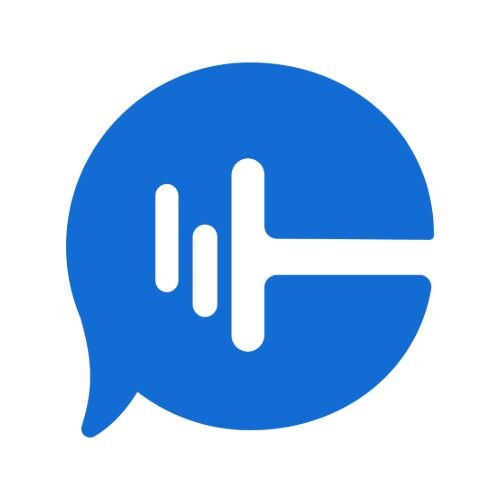Crafting an effective marketing strategy isn’t always straightforward for small businesses. Sometimes business is booming and you have plenty of extra funds in your marketing budget. Other times, you have to adapt your plans to make the most of the resources you have.
The most important thing to remember is that growing a small business is a marathon, not a sprint. You can still grow your business during lean times. You just need a few low-budget marketing ideas and the commitment to carry them out well.
Low-cost marketing tactics for small business owners
Low-budget marketing doesn’t mean scraping the bottom of the barrel. Digital marketing has proven effective for businesses of all sizes, and plenty of online advertising options are cheap or free to use.
Here are some inexpensive marketing ideas that offer great return on investment (ROI) for your brand.
1. Content Marketing
According to Search Engine Journal, content marketing costs 62% less than traditional digital marketing and produces three times as many leads. Even people who use ad blockers and shy away from blatant advertising are willing to explore your site when looking for helpful content that will meet their needs.
Why? Because well-made content is engaging and informative. It’s a solution rather than an ask, which builds brand awareness among an audience who might not otherwise be inclined to search out your services.
Fortunately for small businesses, many forms of content creation are inexpensive or free. Examples include:
- Live-streamed product or sale announcements
- E-books and white papers
- Articles
- Instructional videos
Then, of course, there’s blogging, which more than half of marketers name as their top content marketing strategy.
Blog content costs you nothing if you plan to write the content yourself. Even if you choose to hire a dedicated blog writer, the benefits far outweigh the costs. More than three-quarters of all internet users read blogs regularly, and businesses with regularly updated blogs get twice as many email queries as those without.
Useful content that matches users’ needs can also give your site a great SEO boost, positioning your brand at the top of users’ minds and search engine pages.
2. Social media
According to research from Buffer, 73% of marketers believe that social media has been somewhat effective to very effective in growing their business.
On Facebook or Twitter, you can share links to your blog content and potentially get valuable backlinks that can improve your SEO and build brand awareness. Start by making a list of your best content, then develop a strategy for sharing it. Create a schedule for what goes up when and on which social media platforms.
Be sure to mix your blog content with timely offers and announcements. Post a coupon code that links back to your site, or just announce upcoming promotions. You can also share tips related to your business. If you're a restaurant, share recipes or cooking lessons. if you're a hardware store, share how to videos of DIY projects with your products. if you're a law firm, share much needed tips for will writing. Invite user-generated content that promotes your brand in a fun way, using video, artwork, or anything else that inspires your audience.
Don’t forget about Instagram marketing, especially if your target audience includes teens and young adults. It’s a visual medium, so this is the place to put your images and video content. Attract people to your posts with relevant hashtags and location tagging, and make the most of Instagram stories with engaging, interactive content. Don’t forget to add keywords to your bio and alt text so search engines can find you.
3. Customer reviews
Shoppers take reviews very seriously:
- Almost 95% of consumers read reviews before buying
- Positive reviews make customers 91% more likely to patronize a business
- 76% of shoppers trust online reviews as much as personal recommendations
- Positive reviews make 73% of users trust a local business more
Your response matters too. BrightLocal reports that 97% of customers who read reviews will go on to read the business’s response, and 39% of local shoppers consider whether the business responded when they weigh the review.
To make sure you don’t miss any reviews, set up a review management workflow. It’s free to set up a Google alert, which can notify you when someone mentions your brand online. You can also set up an account for your business on major review sites like Yelp and Google My Business, so you can reply more easily.
Not only do customer reviews help convince your audience that your brand is trustworthy, they can help improve your SEO as well. So post positive reviews on your website to attract new users, and use the negative ones to show existing customers that you take their feedback seriously.
4. Email marketing
Email marketing isn’t the expensive proposition that it sounds like it might be. Small businesses pay an average of $20 to $300 per month to run their own email marketing campaigns, but there are plenty of free marketing tools available for businesses just starting out.
The returns on email marketing are worth the investment too. Search Engine Watch quotes a 3800% ROI for email marketing and reports that for 80% of businesses, email outreach correlates with better customer retention.
To get those kinds of results, though, your emails have to appeal to today’s reader. Only send to people who have opted in to receive emails from you — the last thing you want is for your emails to be marked as spam. Personalize your messages based on the data that you have for your customers, and only send emails that have a clear benefit to the reader.
5. Apply for awards and accreditation
There are lots of business awards out there, and chances are good that your brand qualifies for at least a few. Search for awards in your industry or research general small business awards that take applications or nominations.
Customer service awards, in particular, are effective small business marketing tactics. Some, like the Angie’s List Super Service Awards, are given based on customer reviews and ratings. Others, like the Stevie Awards, accept nominations.
If you’re a finalist or if you receive the award itself, don’t forget to:
- Send out press releases
- Post about the award on your blog and social media
- Add the award logo to your website and other brand materials
Meanwhile, see if you can get any certifications that you can promote. Look within your industry and consider general accreditations like the Better Business Bureau. You can use these credentials to promote your business just like you would with awards, but you don’t have to compete with others.
Remember, you need people to want to open your emails and click on your content.
Offline efforts to support your online marketing strategy
Today’s customers demand an omnichannel experience. As important as a good digital marketing strategy is, customers need face time to become true brand loyalists.
Customer referrals
Customer referrals are among the best cheap marketing ideas for small businesses. It costs almost nothing to get a referral — other than the investment you’re already making by providing a great customer experience — and referrals tend to generate highly promising leads.
When people refer a friend or colleague to your company, it means they think that person matches your audience, and can benefit from working with your brand. A referral is an act of trust. People don’t suggest a business after having a bad experience, so when people come to you on a friend’s recommendation, they already have a positive impression of your business. All you have to do is reinforce that.
If you’re not already asking for referrals from your customers, now is the time to start. It can be something as simple as adding “tell a friend” to your order confirmation emails or receipts. If that’s already your norm, consider offering rewards for successful referrals. For example:
- For every new customer that signs up, you get 20% off your next purchase.
- For each new subscriber that you refer to us, you get one month free.
You can choose the incentive that makes the most sense to your company and budget.
Loyalty programs
Nearly 59% of internet users name rewards and loyalty points as one of the most satisfying aspects of retail. That’s good news for small businesses, because rewards programs don’t cost a lot to implement, and they work for both analog and digital marketing.
As with referral programs, you can choose what kind of loyalty rewards are best suited to your brand. Ideas include:
- A gamified points system with tiered rewards thresholds
- Discounts for email list subscribers
- Punch cards for in-store visits
- Sweepstakes entries with purchase
- App-based rewards for repeat purchases
These frameworks are extremely flexible. You can choose the tiers and rewards that work for your budget, and even change them as your business needs change. Just be careful not to offer too much at first — it’s better to boost rewards than scale back on them.
Cold calling
Don’t buy into the myth that cold calling is dead. The statistics show that it’s very much alive and well. Consider the fact that:
- 69% of buyers accepted at least one cold call in 2019
- 82% of buyers have met with salespeople after a cold call started the conversation
- 51% of company owners would rather hear from sales representatives over the phone compared to other forms of contact
To benefit from cold calling, though, you have to do your research. Segment your market and target your cold calls to prospects’ interests.
Doing so shouldn’t cost you a lot of money or even take much time. According to successful cold callers, researching prospects’ interests on social media is often enough to prepare for a call.
Moving forward: Tracking your marketing
Different marketing strategies work for different brands. So how do you know which marketing tactics are best for your small business?
The only way to find out is to constantly evaluate your strategies. There are many ways to do this, from the classic “How did you hear about us?” to advanced marketing campaign analytics.
Whatever method you choose, make sure it’s comprehensive. Track the entire journey and find out both who you’re reaching and how they’re demonstrating interest. Digital marketing especially is more effective when optimized for your audience.
Call tracking can help you measure the success of your marketing efforts. It shows you which incoming calls come from which marketing campaigns, online or offline. You can even see the entire customer journey up to the incoming call, including any specific marketing tactics that brought the person to the next stage of consideration.
Want to know more about how it works? Reach out to set up a free 20-minute demo with one of our experts to learn how call tracking can help your business.











